Istanbul, a city that straddles two continents, is a mesmerizing blend of history, culture, and modernity. Its strategic location between Europe and Asia has been a crossroads of civilizations for centuries. From the majestic Hagia Sophia to the vibrant energy of the Grand Bazaar, Istanbul offers a journey through time, where ancient architecture, traditional crafts, and contemporary life seamlessly intertwine. This guide explores the lesser-known gems and iconic landmarks of Istanbul, providing insights into each destination’s rich history and cultural significance.
1. Hagia Sophia
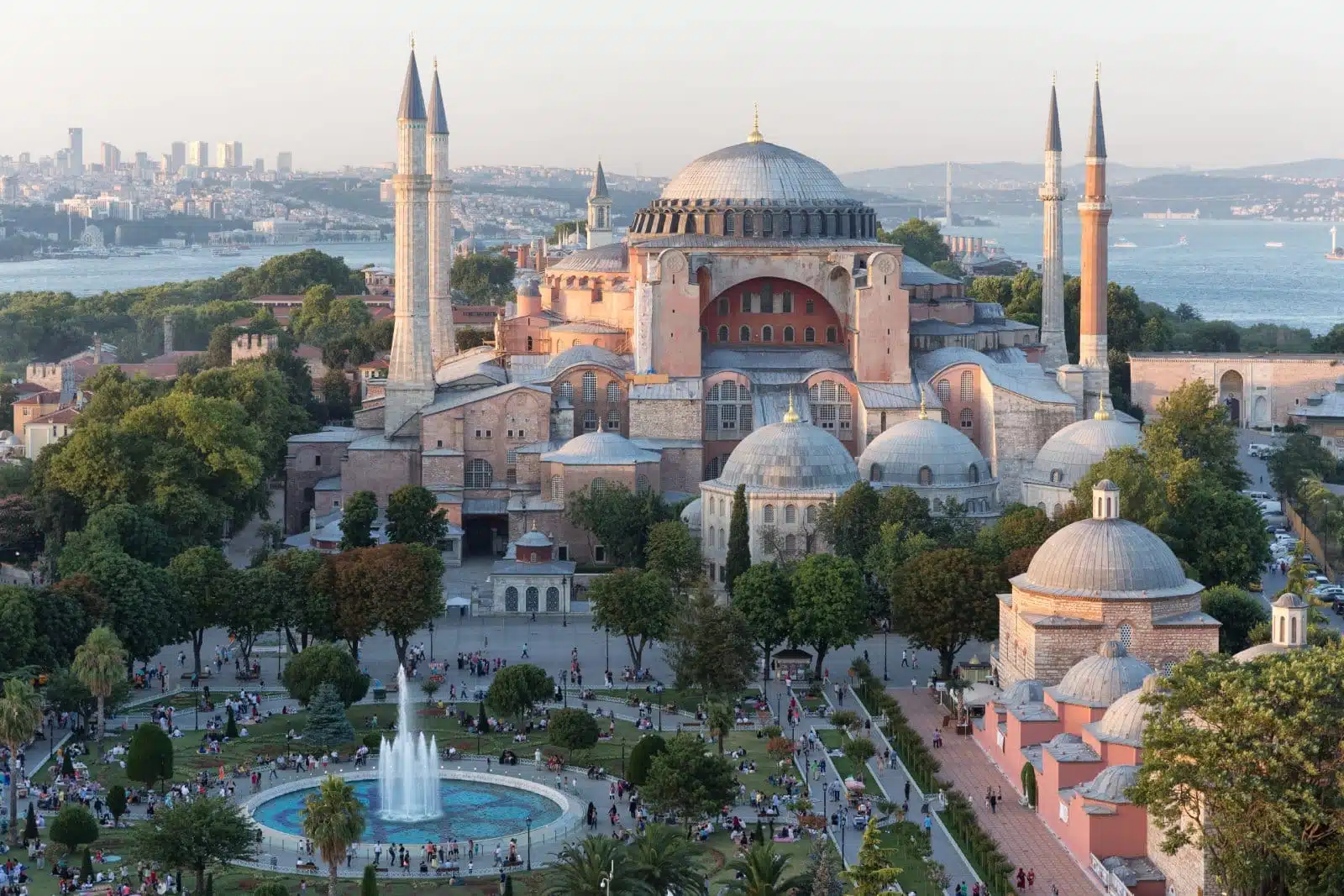
Image Credit: Shutterstock / Mehmet Cetin
The Hagia Sophia, a masterpiece of Byzantine architecture, stands as evidence to Istanbul’s complex history. Originally built as a cathedral in the 6th century, it was later converted into a mosque and now serves as a museum. Its massive dome, intricate mosaics, and historical significance make it a must-visit. The Hagia Sophia is not just an architectural marvel; it’s a symbol of the city’s ability to blend different cultures and religions.
Insider’s Tip
Visit early in the morning to avoid the crowds and experience the mystical ambiance of the Hagia Sophia in a more serene setting.
When to Travel
Spring (April to June) and fall (September to November) offer pleasant weather and thinner crowds.
How to Get There
It’s located in the Sultanahmet district and easily accessible by tram (Sultanahmet stop).
2. Grand Bazaar
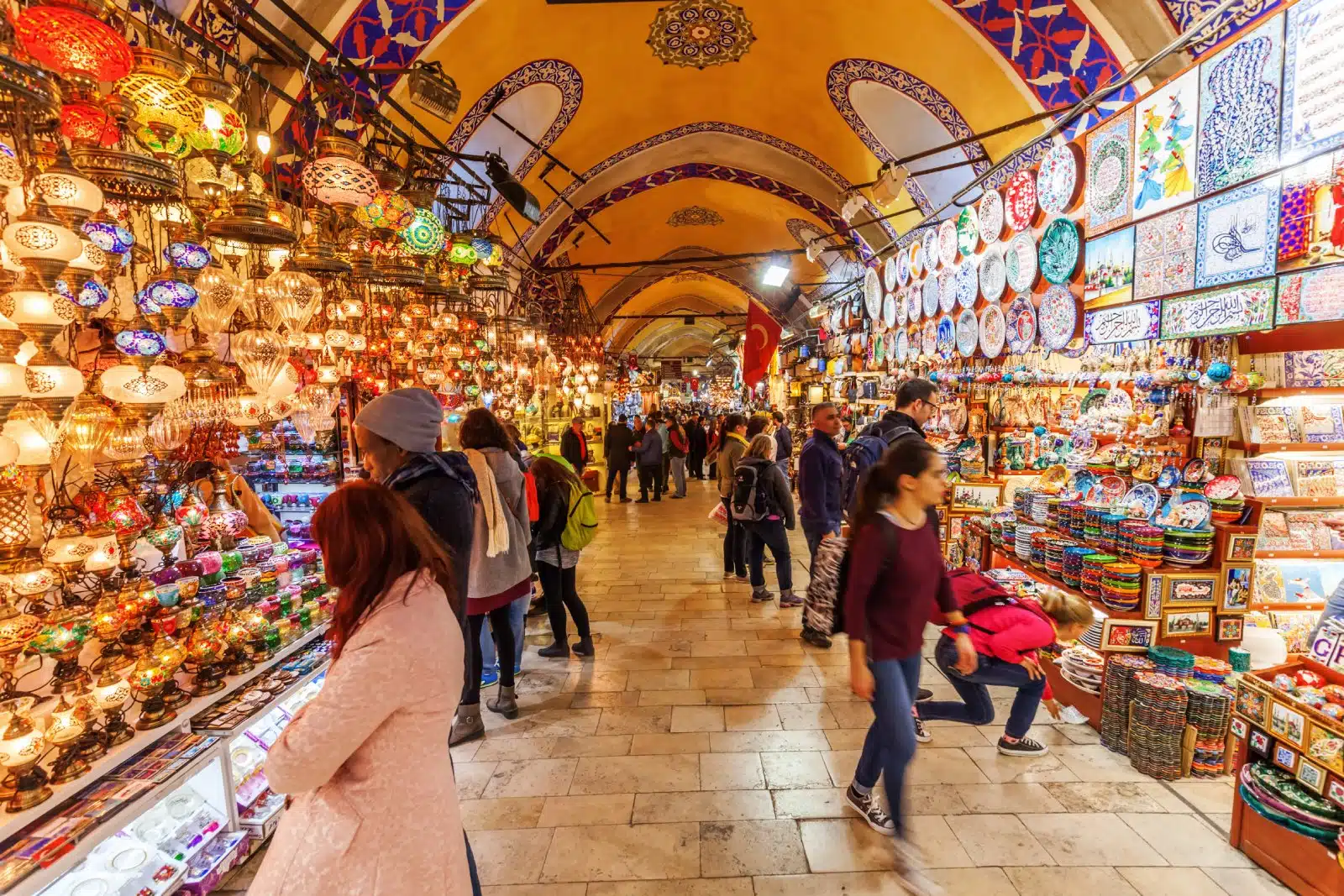
Image Credit: Shutterstock / Christian Mueller
The Grand Bazaar, one of the world’s largest and oldest covered markets, is a labyrinth of over 4,000 shops selling everything from spices and sweets to jewelry and ceramics. Walking through its crowded alleys, you’ll be enveloped in a sensory overload of colors, smells, and sounds. The bazaar is a cultural experience offering insights into Turkish craftsmanship and the art of negotiation.
Insider’s Tip
Hone your bargaining skills to get the best deals, and don’t hesitate to walk away if the price doesn’t suit you.
When to Travel
Visit in the late spring or early fall to avoid the peak tourist season and summer heat.
How to Get There
Easily reachable by tram, disembark at the Beyazıt, Üniversite, or Sirkeci stops.
3. Topkapi Palace
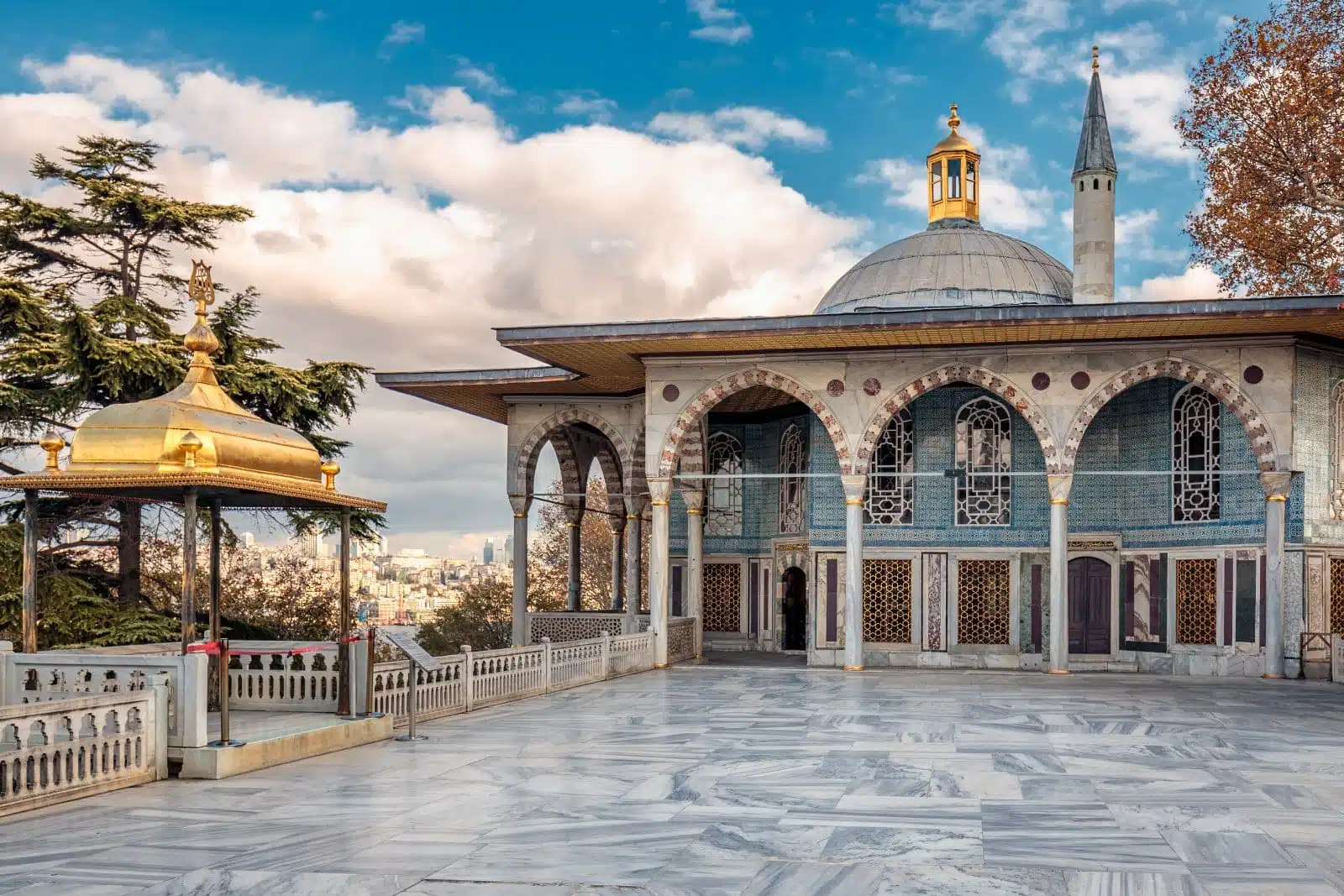
Image Credit: Shutterstock / RuslanKphoto
Topkapi Palace, once the residence of Ottoman sultans, now serves as a museum showcasing imperial collections, including the Prophet Muhammad’s cloak and sword. The palace complex is an architectural marvel featuring opulent courtyards, intricate tilework, and panoramic views of the Bosphorus. Exploring its chambers offers a glimpse into the lavish lifestyle of the Ottoman elite and the empire’s administrative heart.
Insider’s Tip
Don’t miss the Harem section, which requires a separate ticket but offers a fascinating look into the private lives of the sultans and their families.
When to Travel
Spring and fall are ideal for exploring the extensive palace grounds in comfortable weather.
How to Get There
Topkapi Palace is located near the Hagia Sophia and can be reached by the Sultanahmet tram stop.
4. Basilica Cistern
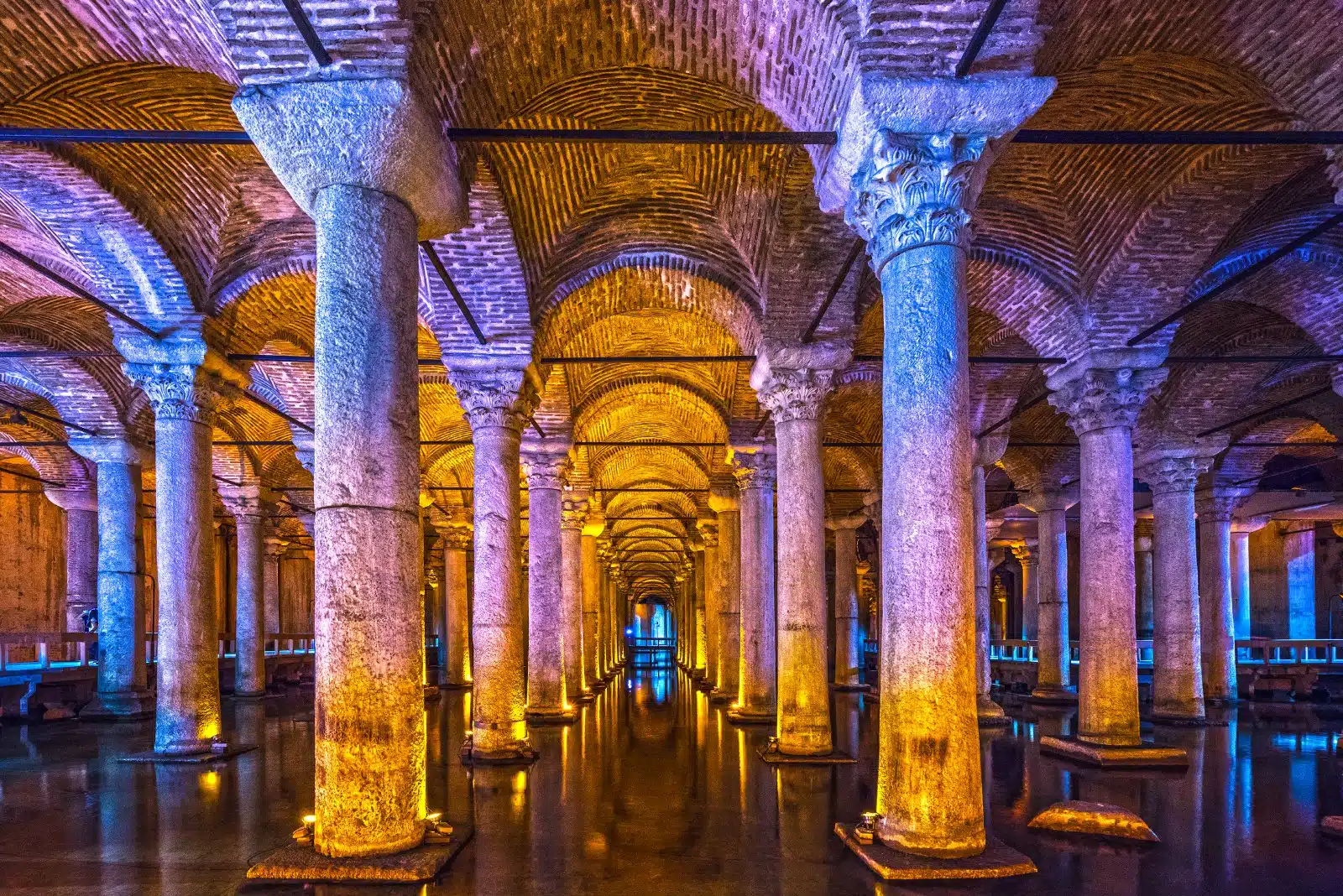
Image Credit: Shutterstock / Luciano Mortula – LGM
The Basilica Cistern, the largest of several hundred ancient cisterns beneath the city, offers a glimpse into the ingenuity of Byzantine engineering. Built-in the 6th century to supply water to the Great Palace, it now stands as a hauntingly beautiful attraction, with its dimly lit corridors and the sound of dripping water echoing off its vaulted ceilings. The cistern’s Medusa head columns are particularly noteworthy, adding a touch of mystery to the already atmospheric setting.
Insider’s Tip
Capture the cistern’s eerie beauty in photographs, but remember to turn off your flash to preserve the ambiance and avoid disturbing the fish that call the waters home.
When to Travel
The cistern is a great year-round destination, offering a cool respite during the hot summer months.
How to Get There
Located in the Sultanahmet district, it’s a short walk from the Hagia Sophia and accessible by the Sultanahmet tram stop.
5. Galata Tower
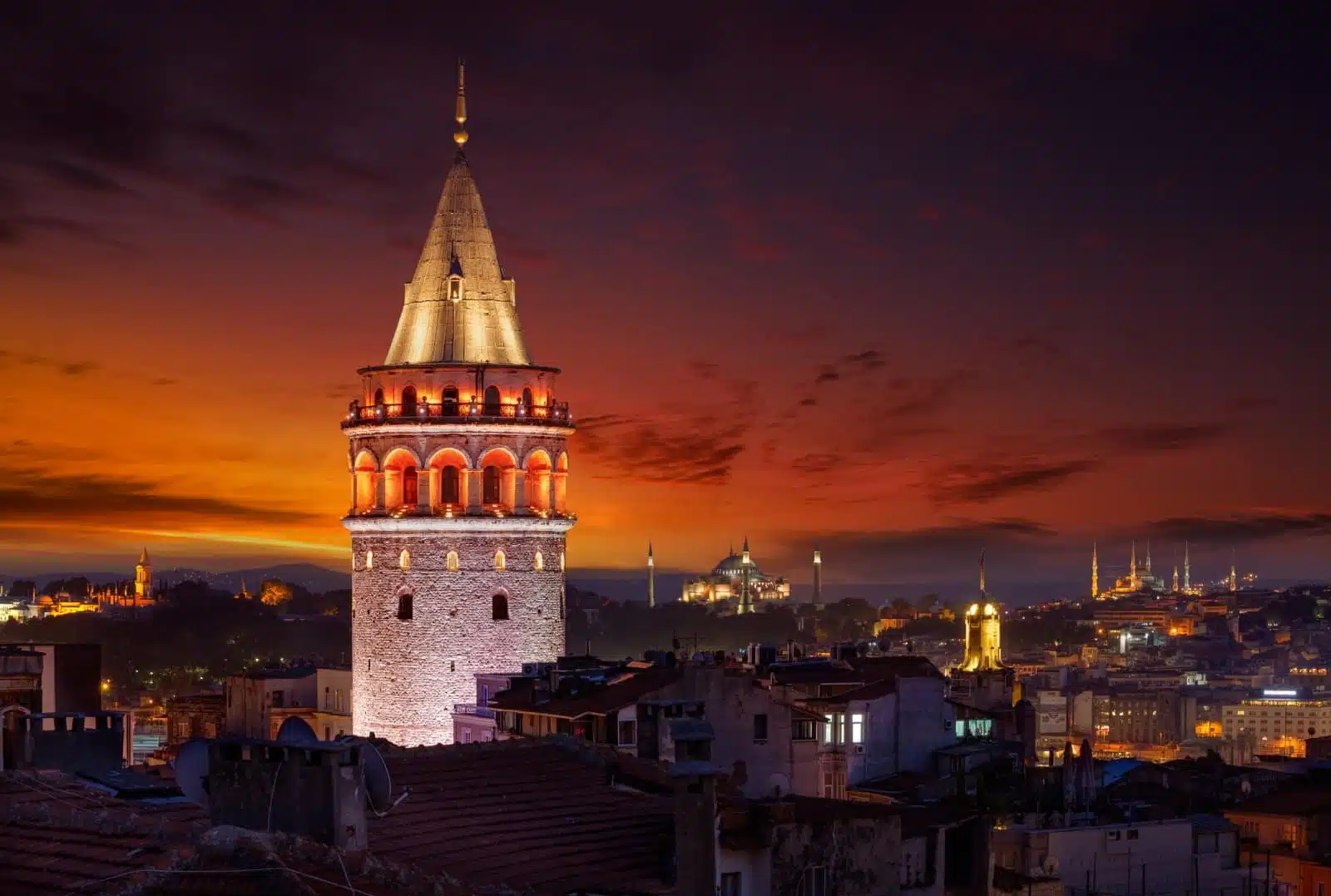
Image Credit: Shutterstock / Stoktur
The Galata Tower, a medieval stone tower in the Galata/Karaköy quarter, offers one of the best panoramic views of Istanbul. Originally built as a watchtower, it now features a restaurant and café on its upper floors. The tower’s balcony encircles the structure, providing a 360-degree view that spans the Golden Horn, Bosphorus, and the Asian side of Istanbul. Visiting the Galata Tower is an opportunity to see the city from a different perspective, highlighting the blend of old and new that characterizes Istanbul.
Insider’s Tip
Visit just before sunset to witness the city transition from day to night, with the call to prayer adding to the ambiance.
When to Travel
Spring and fall shoulder seasons offer clear skies and moderate crowds, ideal for enjoying the view.
How to Get There
The tower is accessible by foot from the Istiklal Street in Beyoğlu or by taking the Tünel (funicular) from Karaköy.
6. Bosphorus Strait
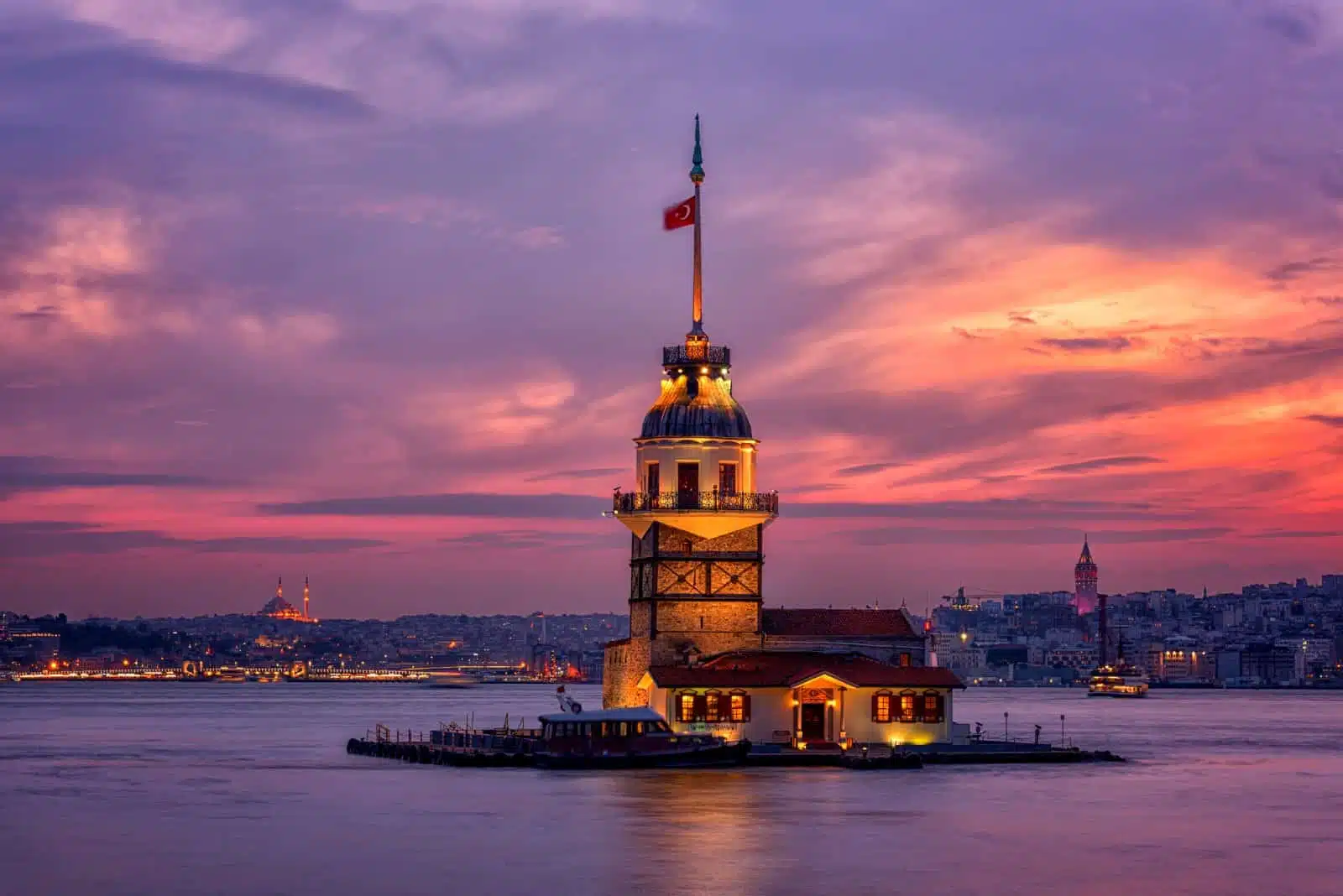
Image Credit: Shutterstock / Uhryn Larysa
A cruise on the Bosphorus Strait is an essential Istanbul experience, offering views of palaces, mosques, and mansions lining the shores of this narrow waterway that divides Europe and Asia. Various cruise options range from short hops on public ferries to private yacht tours. A Bosphorus cruise provides a unique vantage point of the city’s skyline and a deeper understanding of Istanbul’s strategic and cultural significance throughout history.
Insider’s Tip
Opt for a sunset cruise to see the city’s landmarks illuminated against the twilight sky, creating a magical backdrop for photos and memories.
When to Travel
Late spring and early fall offer comfortable temperatures for a cruise, with less fog and clearer views.
How to Get There
Ferries and cruises depart from several points, including Eminönü, Kabataş, and Üsküdar piers, easily reached by public transportation.
7. Chora Church
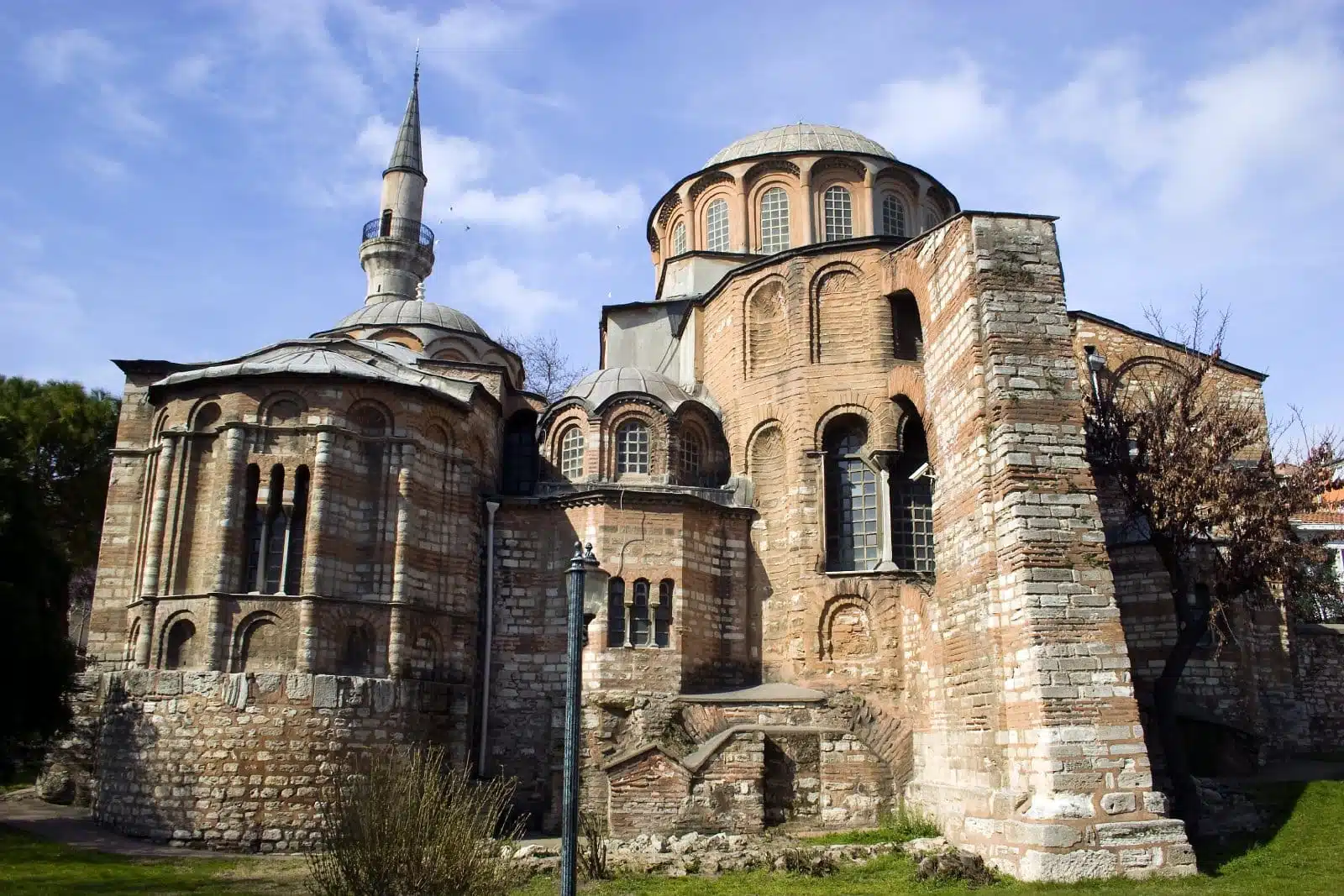
Image Credit: Shutterstock / Ints Vikmanis
The Chora Church, or Kariye Museum, is renowned for its exquisite Byzantine mosaics and frescoes depicting scenes from the life of Jesus and the Virgin Mary. Originally a church, it was converted into a mosque and is now a museum. The artistry and preservation of the mosaics make it a pivotal site for those interested in Byzantine art and history. The Chora Church offers a more intimate setting than the Hagia Sophia, allowing for a closer examination of its artistic details.
Insider’s Tip
Spend time in each section to fully appreciate the narratives depicted in the mosaics and frescoes, many of which are unique to this site.
When to Travel
Visit during the off-peak months of late fall or early spring to avoid crowds and have more space to explore the museum.
How to Get There
Located in the Edirnekapı neighborhood, the Chora Church can be reached by bus or taxi from the city center.
8. Suleymaniye Mosque
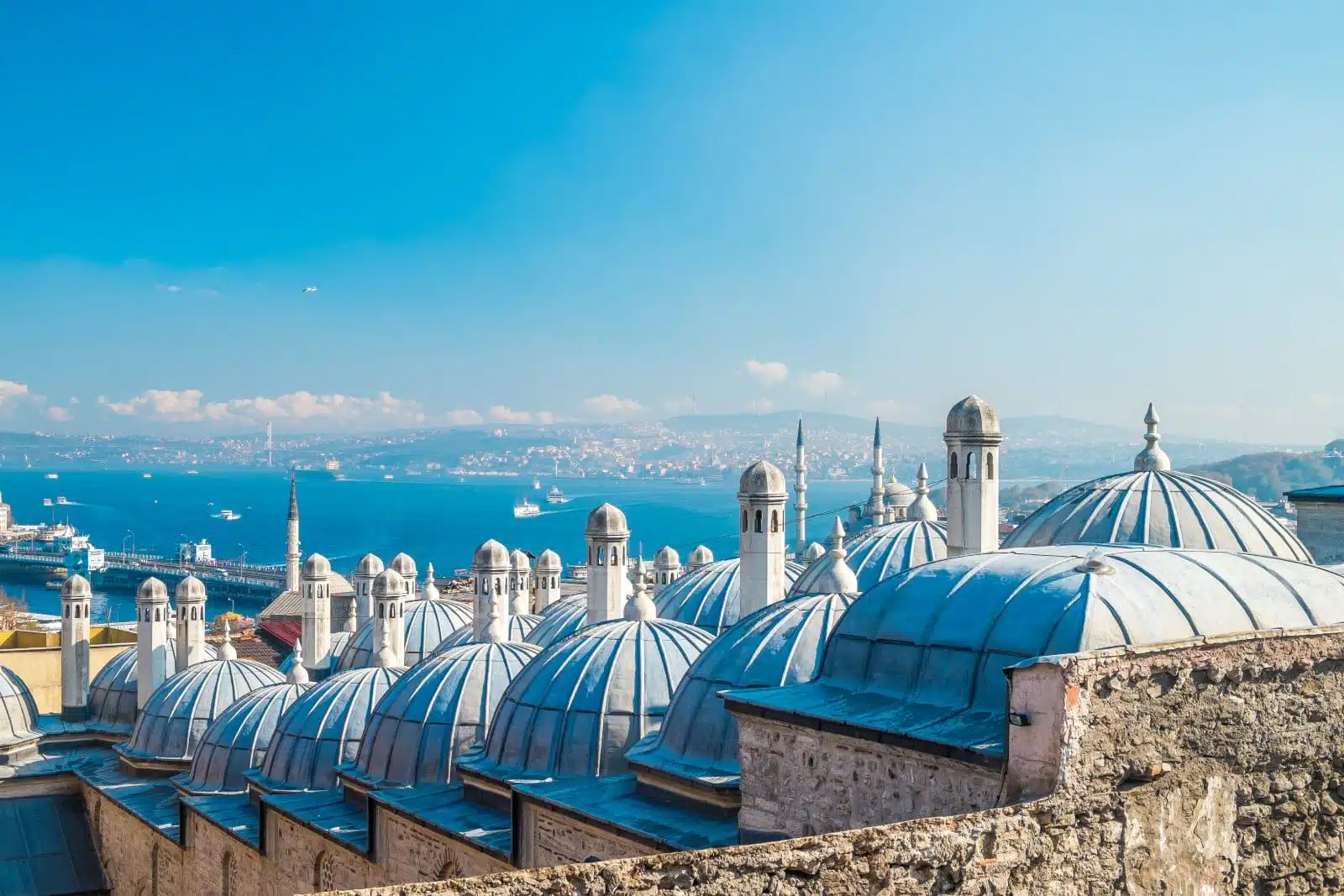
Image Credit: Shutterstock / Sabino Parente
The Suleymaniye Mosque, a grand masterpiece of Ottoman architecture designed by the renowned architect Sinan, symbolizes Istanbul’s skyline. Built in the 16th century, it combines stunning aesthetics with innovative engineering. The mosque complex includes a hospital, library, and bathhouse, reflecting the Ottoman tradition of building social complexes around religious institutions. The Suleymaniye Mosque’s interior, with its harmonious proportions and exquisite tile work, invites contemplation and admiration.
Insider’s Tip
Explore the surrounding gardens and the tombs of Sultan Suleiman and his wife Hurrem Sultan, located within the mosque complex, to gain a fuller understanding of its historical significance.
When to Travel
The mosque is a year-round destination, but visiting outside of prayer times allows for a more leisurely exploration of its architecture and grounds.
How to Get There
Situated on the Third Hill of Istanbul, the mosque is easily accessible from the Eminönü and Sultanahmet areas by tram and a short walk.
9. Dolmabahce Palace
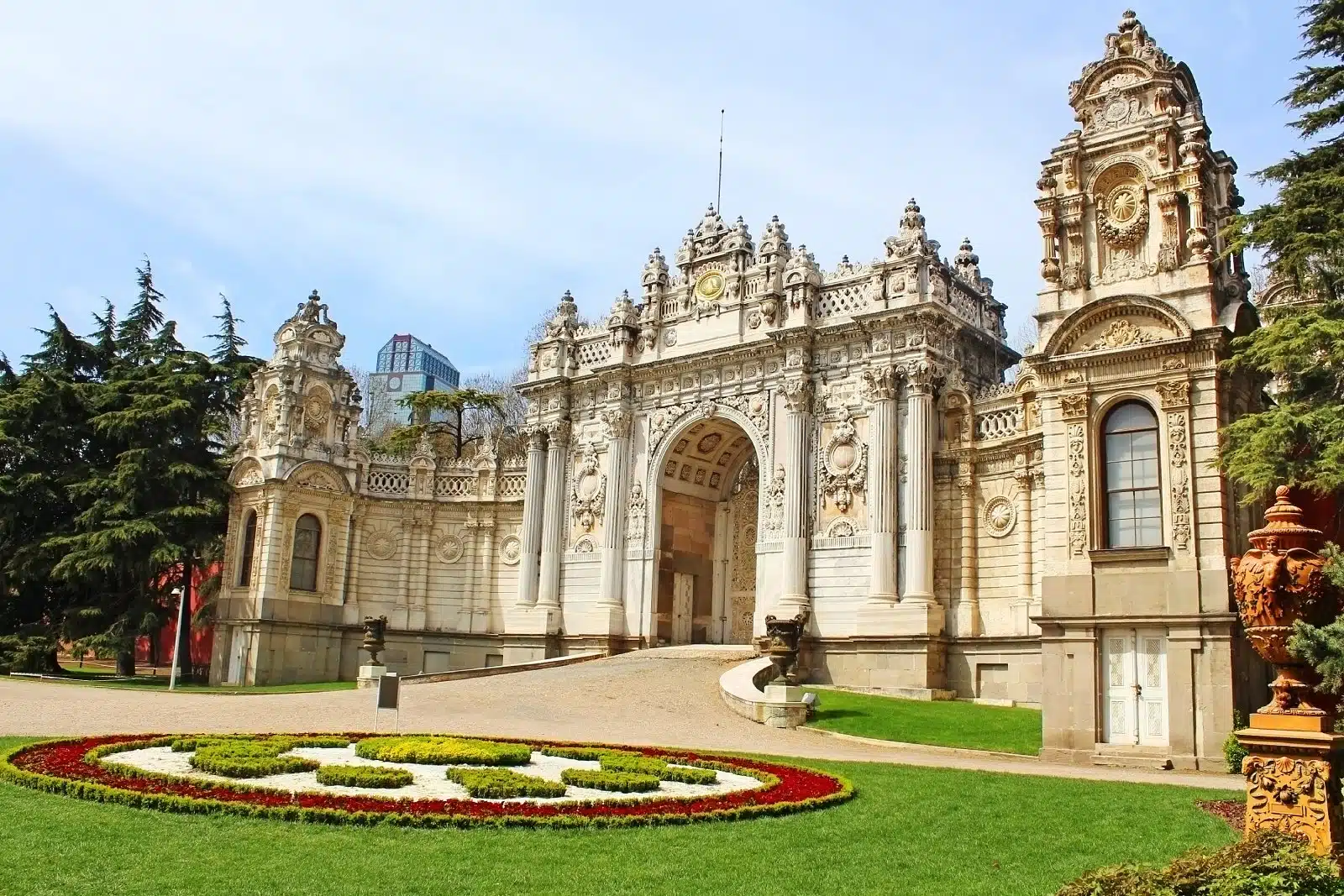
Image Credit: Shutterstock / Gelia
Dolmabahce Palace, with its opulent European-inspired design, marks a departure from traditional Ottoman architecture. Built in the 19th century as the administrative center of the Ottoman Empire, the palace features a blend of Baroque, Rococo, and Neoclassical elements, adorned with lavish interiors, crystal chandeliers, and extensive gardens. A tour of Dolmabahce Palace offers insights into the empire’s final years and the lavish lifestyle of its last sultans.
Insider’s Tip
Don’t miss the palace’s Crystal Staircase and the ceremonial hall with its impressive 4.5-ton chandelier, a gift from Queen Victoria.
When to Travel
Spring and fall provide the ideal climate for strolling through the palace gardens and enjoying the Bosphorus views.
How to Get There
Located in the Beşiktaş district, the palace is accessible by bus or ferry, with the nearest stop being Dolmabahçe.
10. Istiklal Avenue
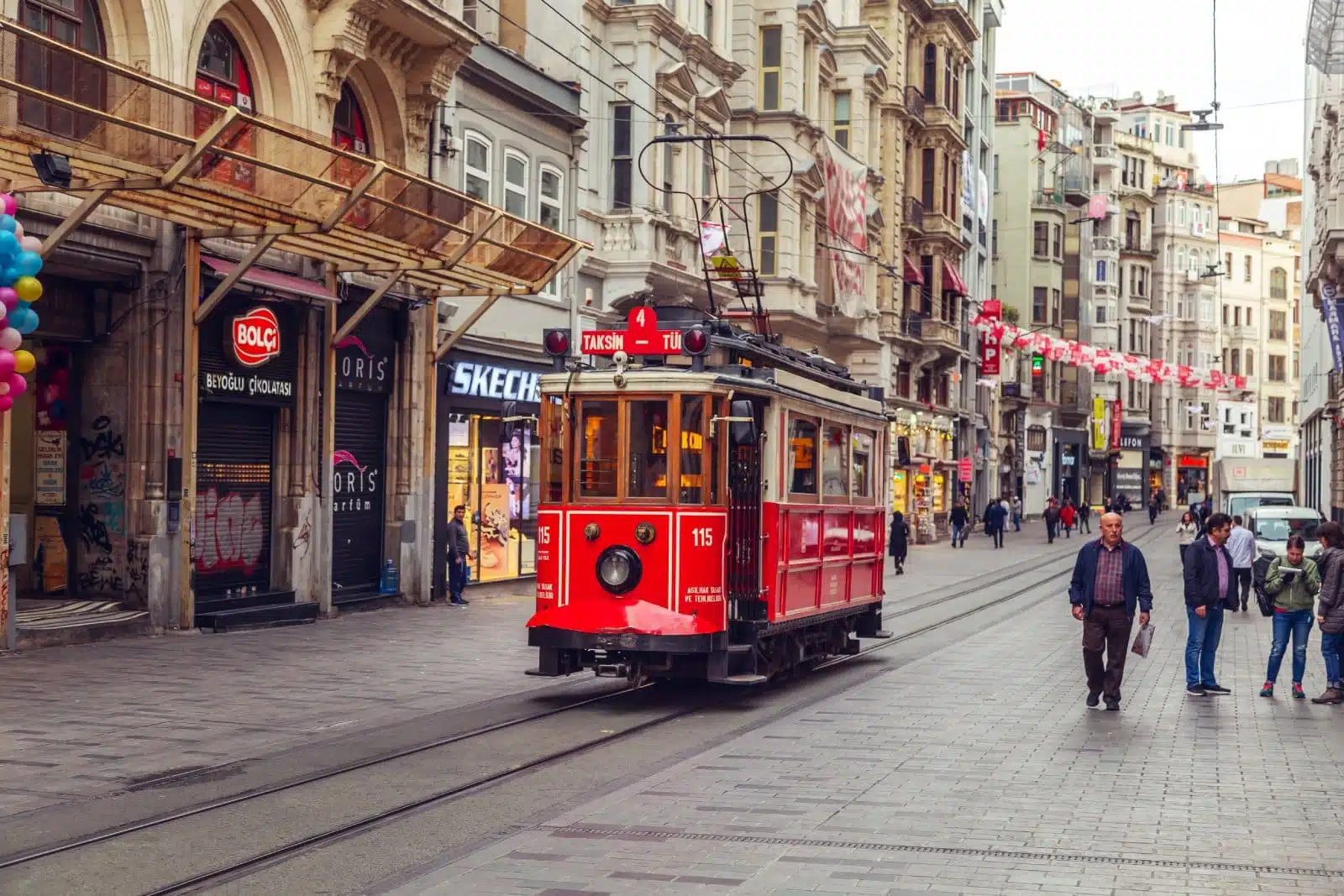
Image Credit: Shutterstock / Lizavetta
Istiklal Avenue, a bustling pedestrian street in the heart of Beyoğlu, is a microcosm of Istanbul’s vibrant urban life. Lined with historic buildings, churches, art galleries, and cinemas, the avenue is a hub of cultural activity. The nostalgic tram running down its length adds to its charm. Istiklal Avenue is also home to a diverse array of shops, cafes, and restaurants, offering everything from traditional Turkish cuisine to international fare. It is a perfect spot for people to watch and soak in the city’s contemporary culture.
Insider’s Tip
Venture into the side streets and alleys off Istiklal Avenue to discover hidden gems, including quaint bookshops, vintage stores, and cozy cafes.
When to Travel
While Istiklal Avenue is lively year-round, visiting in the spring or fall offers a more comfortable experience for exploring the area on foot.
How to Get There
Easily accessible from Taksim Square at one end and the Şişhane metro station at the other, Istiklal Avenue serves as a central point in modern Istanbul.
11. Princes’ Islands
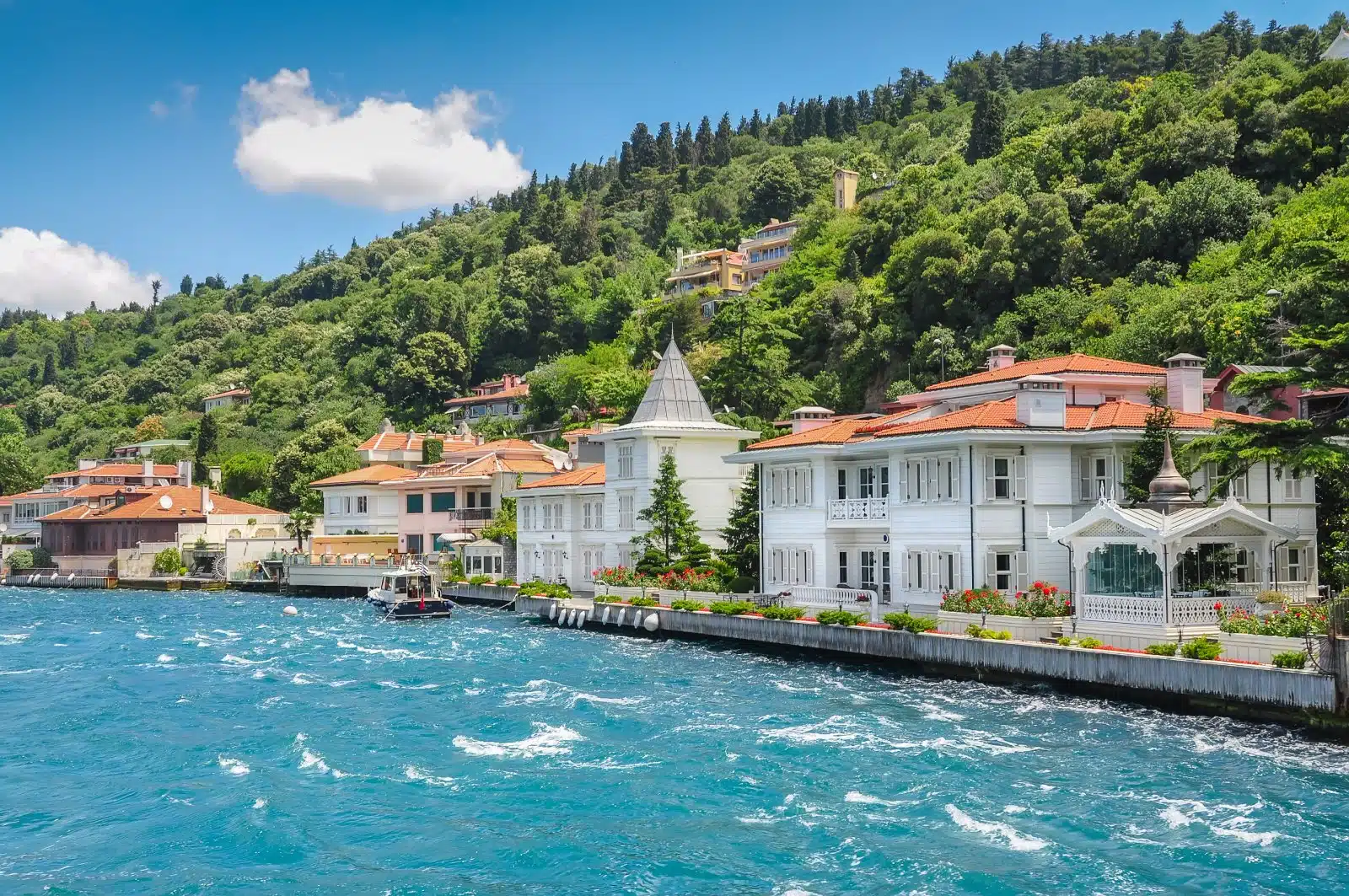
Image Credit: Shutterstock / Ann Stryzhekin
The Princes’ Islands, a group of nine islands off Istanbul’s Asian shore, offer a peaceful retreat from the city’s hustle and bustle. Büyükada, the largest island, is known for its Ottoman-era mansions, pine forests, and vehicle-free streets, making it ideal for bicycle rides and horse-drawn carriage tours. The islands glimpse into Istanbul’s multicultural past, with historic churches, synagogues, and mosques dotting their landscapes. A visit to the Princes’ Islands is a journey into a slower-paced lifestyle, where the beauty of the Marmara Sea and the charm of island life take center stage.
Insider’s Tip
Rent a bike to explore the islands at your own pace, discovering secluded beaches and panoramic viewpoints along the way.
When to Travel
The islands are most enjoyable in the late spring and early fall when the weather is mild and the summer crowds have thinned.
How to Get There
Ferries to the Princes’ Islands depart from various points in Istanbul, including Kabataş and Bostancı, offering a scenic route to these tranquil retreats.
12. Emirgan Park
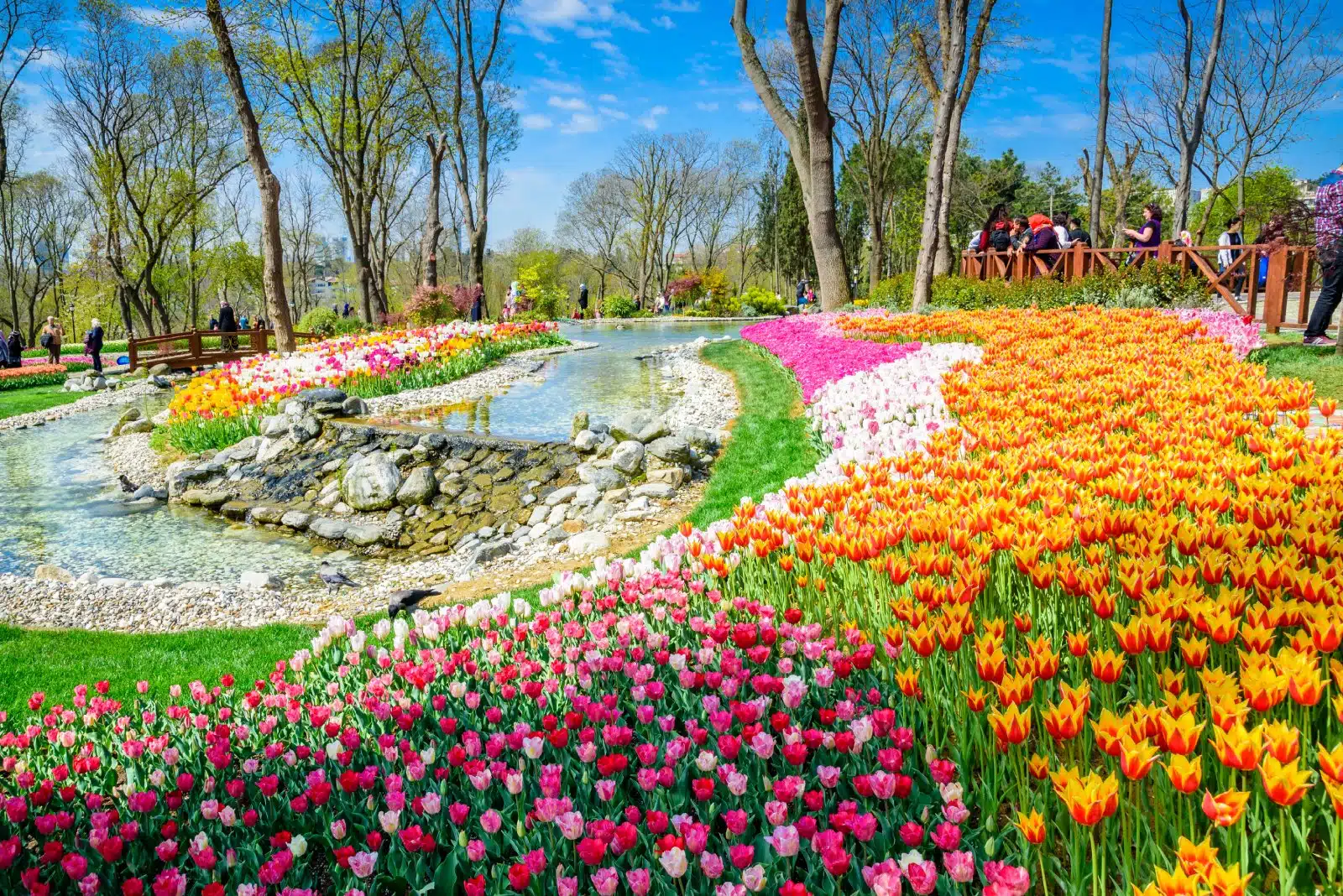
Image Credit: Shutterstock / epic_images
Emirgan Park, one of Istanbul’s largest public parks, is a verdant oasis on the European shores of the Bosphorus. Spanning over 117 acres, this historic park offers a peaceful retreat with its colorful flower gardens, pine forests, and scenic ponds. Initially established by the Ottomans, the park features three historic pavilions, each painted in a distinctive color, which now serve as restaurants and cafes. The park is particularly famous for its Tulip Festival in April, when millions of tulips bloom in a spectacular display of colors, drawing visitors from around the world.
Insider’s Tip
Plan your visit during the Tulip Festival for the most breathtaking views, but ensure that you arrive early in the morning to avoid the crowds and capture the best photographs.
When to Travel
April is ideal for the Tulip Festival, but the park is a beautiful destination year-round, with each season offering its own charm.
How to Get There
Emirgan Park is accessible by bus or taxi from central Istanbul. Visitors can also take a Bosphorus ferry to the nearby Emirgan pier and enjoy a short walk to the park.
The Bottom Line
Istanbul, a city where continents collide, offers a tapestry of experiences that weave together the threads of history, culture, and modern vibrancy. As you explore its ancient streets and modern boulevards, remember that Istanbul is more than just a destination; it’s a gateway to understanding the complexities and beauties of human civilization. Whether you’re marveling at the architectural wonders of the Hagia Sophia, wandering through the bustling alleys of the Grand Bazaar, or finding serenity on the Princes’ Islands, Istanbul promises a journey that will captivate your heart and enrich your spirit.
More From The Green Voyage
12 Best Practices for Sustainable Travel in 2024 – How to Travel With Minimal Environmental Impact
Unlocking Hotel Perks – A Traveler’s Guide to Maximizing Hotel Reward Programs for Optimal Benefits
Travel Hacks for Frequent Flyers – 6 Tips and Tricks to Make the Best of Air Travel
The post A 12-Step City Guide to Istanbul, Turkey 2024 first appeared on The Green Voyage.
Featured Image Credit: Shutterstock / BONDART PHOTOGRAPHY.
For transparency, this content was partly developed with AI assistance and carefully curated by an experienced editor to be informative and ensure accuracy.
Tips for Trip Success
Book Your Flight
Find an inexpensive flight by using Kayak, a favorite of ours because it regularly returns less expensive flight options from a variety of airlines.
Book Your Hotel or Special Accommodation
We are big fans of Booking.com. We like their review system and photos. If we want to see more reviews and additional booking options, we go to Expedia.
You Need Travel Insurance!
Good travel insurance means having total peace of mind. Travel insurance protects you when your medical insurance often will not and better than what you get from your credit card. It will provide comprehensive coverage should you need medical treatment or return to the United States, compensation for trip interruption, baggage loss, and other situations.Find the Perfect Insurance Plan for Your Trip
